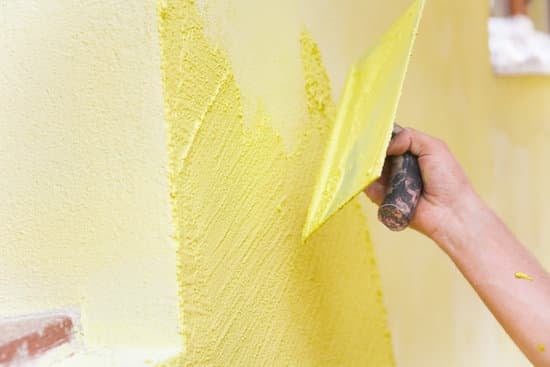Are you considering making improvements to your home but need the funds to make it happen? In this blog post, we will explore the concept of releasing equity for home improvements and how it can be a viable option for homeowners. Whether you’re looking to renovate your kitchen, add an extension, or upgrade your bathroom, equity release could provide the financial solution you need.
Equity release is a way to access the value tied up in your property without having to sell it. It allows homeowners aged 55 and over to release a tax-free lump sum or income from their property’s value, which can then be used for various purposes, including home improvements. This section will delve into the details of how equity release works and its specific application for home improvement projects.
In the following sections, we will cover everything you need to know about equity release, including eligibility criteria, the process of releasing equity, risks and considerations, alternative financing options, and valuable tips and advice for homeowners. By the end of this blog post, you’ll have a better understanding of whether releasing equity for home improvements is the right choice for you and your property.
Understanding Equity Release
Equity release is a financial product that allows homeowners to access the value tied up in their property without having to sell it. There are several types of equity release options available, including lifetime mortgages and home reversion plans.
Types of equity release options:
- Lifetime Mortgages: This option allows homeowners to borrow against the value of their property while still retaining ownership. The loan plus interest is repaid when the property is sold, typically after the homeowner passes away or moves into long-term care.
- Home Reversion Plans: With this option, homeowners sell a portion or all of their property to a provider in exchange for a lump sum or regular payments. The homeowner can continue living in the property as a tenant with no rent to pay.
It’s important for homeowners to carefully consider the terms and conditions of these equity release options and seek professional financial advice before making a decision.
Using Equity Release for Home Improvements
One popular use for releasing equity is funding home improvement projects. Homeowners may choose to release equity to renovate their homes, enhance their living space, or increase its value in the real estate market. Some may even use released equity to make necessary repairs or modifications for accessibility reasons.
While using equity release for home improvements can be advantageous, it’s essential for homeowners to understand the potential drawbacks as well. It’s important to carefully assess whether the benefits of using released equity for home improvements outweigh the risks involved.
Using Equity Release for Home Improvements
Homeowners often find themselves in need of additional funds for various home improvement projects, whether it’s renovating the kitchen, adding a new bedroom, or updating the outdoor space. One way to finance these projects is by using equity release. This option allows homeowners to tap into the value of their property and use the released funds for home improvements. Here’s how you can effectively use equity release for your home improvement projects:
- Determine Your Funding Needs: The first step in using equity release for home improvements is to assess your funding needs. Make a list of all the projects you want to tackle and estimate the costs involved. Whether it’s a small or large-scale renovation, having a clear understanding of your funding requirements will help determine how much equity you need to release.
- Evaluate the Benefits and Drawbacks: Before deciding to release equity for home improvements, it’s essential to weigh the benefits and drawbacks. On one hand, using equity release gives you access to a significant amount of funds without having to move out of your property. On the other hand, it may reduce the inheritance you leave behind for your loved ones and could affect any means-tested benefits you receive.
- Work with a Financial Advisor: Considering professional advice is crucial when using equity release for home improvements. A qualified financial advisor can help you understand the implications, risks, and potential alternatives before making a decision. They can also guide you through the process and ensure that releasing equity aligns with your long-term financial goals.
Equity release can be an effective way to fund home improvement projects without having to dip into savings or take out high-interest loans. However, it’s important to carefully consider all aspects before moving forward with this option. By understanding how releasing equity works and seeking expert advice, homeowners can make informed decisions about using this financing method for their home improvement endeavors.
Eligibility for Releasing Equity
Understanding if you are eligible to release equity for home improvements is an important step in the decision-making process. Equity release is typically available for homeowners who are aged 55 and over, and who own a property with a significant amount of value. However, there are other factors to consider as well.
Age and Property Ownership
The minimum age requirement for releasing equity is typically 55, although some providers may have higher age requirements. Additionally, the property must be your primary residence and have a certain market value. The amount of equity that can be released will depend on your age, the value of your property, and any outstanding mortgage balance.
Health and Lifestyle
Some equity release options also take into account your health and lifestyle factors. For example, if you have certain health conditions or if you are a smoker, it could potentially increase the amount of equity you can release from your home.
Financial Situations
Your financial situation will also be taken into consideration when determining eligibility for equity release. This includes factors such as outstanding debts, income, and credit history. Lenders will want to ensure that releasing equity is a suitable option for your financial circumstances.
Before deciding to release equity for home improvements, it’s important to carefully assess your eligibility based on these factors. Consulting with a financial advisor or equity release specialist can provide valuable insights into whether this option is suitable for your individual circumstances.
The Process of Releasing Equity
Releasing equity for home improvements can be a viable option for homeowners looking to fund renovation projects. The process of releasing equity involves unlocking the value of your property to obtain a lump sum or regular payments. This can be done through various equity release options such as lifetime mortgages or home reversion plans.
To start the process of releasing equity for home improvements, homeowners must first determine their eligibility and seek professional financial advice. Eligibility for equity release typically depends on factors such as age, property value, and outstanding mortgage balance. Additionally, it is important to consider the potential risks and drawbacks of using equity release, as well as alternative financing options available.
The process of releasing equity for home improvements may involve engaging with a qualified financial advisor and legal professional to ensure all aspects are carefully considered and understood. It’s also crucial to familiarize oneself with the legal implications and consequences of using equity release. By understanding the process thoroughly, homeowners can make informed decisions about whether releasing equity is the right choice for financing their home improvement projects.
| Equity Release Process | Key Considerations |
|---|---|
| Determine eligibility based on age, property value, and mortgage balance | Consider potential risks and drawbacks of using equity release |
| Seek professional financial advice from qualified advisors | Evaluate alternative financing options for home improvements |
| Engage with legal professionals to understand legal implications of equity release | Make informed decisions about financing home improvement projects |
Risks and Considerations
Using equity release for home improvements can be a convenient option for homeowners looking to make necessary upgrades or renovations. However, it’s important to carefully consider the potential risks and drawbacks before making this decision.
Potential Risks
One of the main risks associated with releasing equity for home improvements is the long-term financial impact. By releasing equity, homeowners are essentially borrowing against the value of their property, which means they may have less to leave as an inheritance in the future. Additionally, if property values were to decrease, it could potentially leave the homeowner in negative equity.
Another risk to consider is the impact on government benefits and support. Releasing equity could affect eligibility for certain benefits, so it’s important to factor this into the decision-making process.
Considerations Before Releasing Equity
Before choosing to release equity for home improvements, homeowners should carefully assess their current financial situation and future needs. It’s important to have a clear understanding of how much equity can be released and whether it will be sufficient to cover the planned home improvement projects. Additionally, considering any potential changes in personal circumstances or health issues that could impact overall financial stability is crucial.
Taking into account all associated costs such as interest rates and fees is also an important consideration. Homeowners should thoroughly research and compare different equity release options available to ensure they are getting the best deal possible.
By weighing up these potential risks and considerations, homeowners can make a well-informed decision about whether or not releasing equity for home improvements is the right choice for them.
Alternatives to Equity Release
Using equity release for home improvements can be a great option for homeowners looking to fund renovation projects. However, it’s important to consider all the alternatives before making a decision. One alternative to equity release is taking out a home improvement loan. This type of loan allows homeowners to borrow a specific amount of money at a fixed interest rate, which can be used for home improvement projects.
Another alternative is a cash-out refinance, which involves refinancing your existing mortgage for an amount higher than what you currently owe. The difference between the new loan and the original loan is then given to the homeowner in cash and can be used for home improvements.
Additionally, some homeowners may choose to use personal savings or take out a personal loan to fund their home improvement projects. Personal loans typically have fixed interest rates and set repayment terms, providing borrowers with a clear understanding of their financial commitment.
It’s important for homeowners to carefully consider all the financing options available to them before deciding on the best approach for funding their home improvement projects.
| Alternative | Description |
|---|---|
| Home Improvement Loan | Borrow specific amount at fixed interest rate |
| Cash-Out Refinance | Refinancing mortgage for higher amount and receive difference in cash |
| Personal Savings/Personal Loan | Use own savings or take out personal loan with fixed interest rates and repayment terms |
Tips and Advice for Homeowners
When considering releasing equity for home improvements, there are some important tips and advice that homeowners should keep in mind to make the most out of this financial decision. Firstly, it is crucial to carefully evaluate the potential impact of releasing equity on your future financial situation. This involves considering factors such as interest rates, loan terms, and the overall cost of borrowing against your home’s value.
Additionally, it is recommended for homeowners to have a clear plan and budget for their home improvement projects before deciding to release equity. By having a well-defined plan in place, homeowners can ensure that the funds released through equity will be used efficiently and effectively towards their renovation or remodeling goals.
Furthermore, seeking professional financial and legal advice is highly advisable when contemplating equity release for home improvements. Consulting with a financial advisor or mortgage broker can provide valuable insights into the available options, associated risks, and long-term implications of releasing equity. Moreover, obtaining legal guidance can aid in understanding the contractual obligations and potential ramifications of utilizing equity for home improvements.
By following these tips and advice, homeowners can make informed decisions regarding whether or not to release equity for their home improvement projects. It is essential to carefully weigh the benefits and drawbacks while also exploring alternative financing options before moving forward with an equity release plan. With proper research and consideration, homeowners can navigate this financial decision with confidence.
Conclusion
In conclusion, releasing equity for home improvements can be a viable option for homeowners looking to fund renovation projects or upgrades to their property. Throughout this blog post, we have explored the concept of equity release and its different options, as well as how it can specifically be used for home improvement purposes. We have also discussed the eligibility requirements, process, risks, and alternatives to equity release, providing a comprehensive overview for homeowners considering this financing option.
It’s important for homeowners to carefully evaluate all factors before deciding to release equity for home improvements. While this method can provide the necessary funds to create the dream home you’ve always wanted, there are also potential risks and drawbacks that should be taken into consideration. Before making any decisions, it’s crucial to seek professional financial advice and explore alternative financing options to ensure that releasing equity is the right choice for your individual circumstances.
Ultimately, if done with careful consideration and planning, releasing equity for home improvements can offer a valuable solution for homeowners looking to enhance their living space. By weighing the benefits and drawbacks, understanding the process and eligibility requirements, and exploring alternate financing methods, individuals can make informed decisions when it comes to utilizing equity release for their home improvement projects.
Frequently Asked Questions
Is It a Good Idea to Use Home Equity for Home Improvements?
Using home equity for home improvements can be a good idea, especially if the renovations will increase the value of your home. It allows you to borrow against the value of your home and use the funds for upgrades or repairs.
However, it’s important to consider the potential risks, such as being at risk of losing your home if you can’t repay the loan.
Can You Take Equity Out of Your House to Renovate?
Yes, it is possible to take equity out of your house to renovate. This can be done through a home equity loan or a cash-out refinance.
With a home equity loan, you receive a lump sum that you repay over time with a fixed interest rate, while with a cash-out refinance, you replace your existing mortgage with a new one that has higher principal to pay for the renovation.
Can I Pull Equity Out of My House Without Refinancing?
It is possible to pull equity out of your house without refinancing through options like a home equity line of credit (HELOC) or a home equity loan. A HELOC acts as a line of credit that allows you to withdraw money as needed up to a certain limit and repay it with variable interest rates.
A home equity loan provides a lump sum payment with fixed interest rates that must be repaid over time. These options do not require refinancing your existing mortgage but still allow you access to the equity in your house.

I’m thrilled to have you here as a part of the Remodeling Top community. This is where my journey as an architect and remodeling enthusiast intersects with your passion for transforming houses into dream homes.





